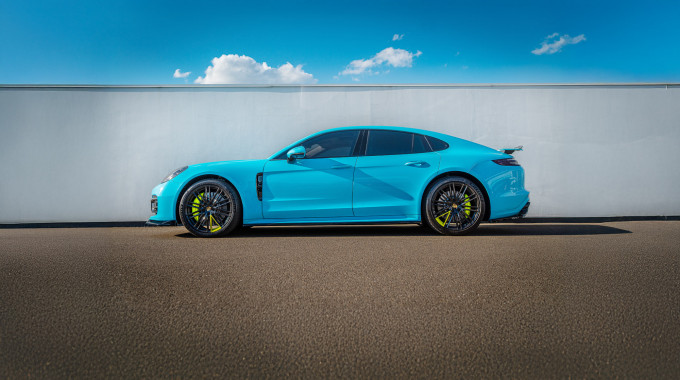
Going Electric: Should I Buy an EV in 2022?
All it takes is a simple eye test to see the winds of automotive change are blowing towards electric.
The next time you’re stopped at a red light, or stuck in traffic, survey the surrounding cars and note how many Teslas, Nissan Leafs, and other EVs and hybrids are quietly idling around you. It’s a clear indication that drivers are increasingly hanging up the gas pump for good.
Industry observers say the gas-powered (or internal combustible engine - ICE) car still has a long way to go (at least 15 years) before extinction.
That may be true.
Its century-old existence isn’t going to disappear overnight. But with so many automakers, not to mention various levels of government, promising emission-free transportation by a certain date, it’s not a stretch to view an EV takeover as an inevitability.
Beyond macro industry trends and eco-civic responsibility, the financial factor plays a huge role in whether a driver decides to buy an electric vehicle. Gas prices never seem to go down over the long run, only up, and EVs offer emancipation from the gas station shackles. There’s also less costly maintenance involved, plus government incentives and other financial rebate programs.
Does that make the choice to switch to an electric vehicle or a hybrid a simple one? There are many considerations to weigh first. And perhaps most importantly – is it really going to save you money on a daily basis?
Let’s plug in and charge up the debate about the price of going electric
Canada’s federal EV rebates & incentives
The recent federal budget included billions for carbon-reducing technology while keeping its incentive for Canadians to go green on their next vehicle purchase.
Dubbed the iZEV program, this rebate system comes at the point-of-sale from a dealership (or online) in two tiers:
- Battery-electric, hydrogen fuel cell, and longer-range plug-in hybrid vehicles qualify for an incentive of $5,000 back.
- Shorter range plug-in hybrid electric vehicles are eligible for a $2,500 incentive.
To qualify, the retail price has to be under $55,000 for a passenger car and $60,000 for a truck, van, or SUV (there are some exceptions based on nicer version “trims”), and the vehicle has to be on this list of iZEV-approved models.
Add provincial EV rebates & incentives
The federal government’s iZEV program alone won’t likely tilt the scales of someone’s purchase decision, but when you layer it with a provincial rebate on EVs, the price reduction becomes significant. You can lower your sticker price by as much as $13,000!
Unfortunately, not every provincial government offers an incentive to go electric. There is no rebate in Ontario, for example. Doug Ford scrapped the rebate program insisting it would save taxpayers money. That’s questionable logic, as it could mean drivers paying more taxes at the pumps.
Nevertheless, two provinces stand out for maintaining meaningful green rebates for buying electric – Quebec and British Columbia.
Quebec: La Belle Province is the best province to buy an electric vehicle. You can get up to $8,000 off when buying a new BEV (battery electric vehicle) or PHEV (plug-in hybrid vehicles). Also noteworthy of Quebec’s program is the extensive list of eligible vehicles with price tags as high as $75,000. Combined with the federal program, you could save as much as $13,000. If you want to buy a pre-owned EV in Quebec, you can get a rebate for up to $4,000.
British Columbia: The westernmost province is also fast becoming a land of Teslas and charging stations thanks to BC’s generous rebate program. The government's CleanBC Go Electric program offers up to $3,000 off the purchase of a battery electric vehicle (BEV) and $1,500 off the purchase of a plug-in hybrid vehicle (PHEV). There’s also up to $350 in incentives for installing a home charging station. In addition to the federal rebate of $5,000, you could get up $8,350 in rebates!
EV charging costs vs. gas costs
Pain at the pumps is probably the single biggest motivator in considering buying an EV or PHEV. While it’s not free to charge up your car at home, that cost is dwarfed by what you would typically spend a year in fuel consumption. In fact, operating an electric vehicle can cost 1/5 or less than an internal combustible engine (ICE) car.
Provincial utility company BC Hydro has created a handy EV vs. Gas Cost Calculator so you can get an accurate representation of what kind of savings you’re in for. An example would be the popular Chevy Bolt EV compact, which you could save approximately $1,291 on fuel a year if you drove it 20,000 kilometres annually. The crown corporation also pegs home charging costs at $2 per 100 km, so $400 a year. Considering the equivalent gas-powered vehicle to the Chevy Bolt costs an average of $1,848 ($154/month) a year in gas, you are saving big time.
Of course, gas prices could be cheaper depending on your province or territory, so take that into account too.
Read more: How Long Does It Take To Charge an Electric Car and How Much Does It Cost?
EV vs. ICE maintenance costs
Many drivers balk at the prospect of switching to EV simply because the sticker price is too high compared to ICE vehicles. That’s mostly due to the cost of batteries in EVs. But trends indicate the price of batteries will fall and take retail prices down with them. However, one of the biggest expenses in EV ownership is battery replacement if required.
Battery replacement can happen around the 10-year mark or maybe earlier. And finding an EV battery isn’t as easy as picking one up at Canadian Tire. Drivers of the Nissan Leaf, one of the world’s best-selling EVs, complained last year about an inability to procure a replacement battery pack. A Leaf owner was told by Nissan that a new battery pack would cost $15,000 versus the $5,000 he was originally quoted during its purchase. Tesla battery replacements can cost between $12,000-$15,000.
However, maintenance and repair for an electric vehicle or hybrid can be significantly lower over the lifetime of a car. Think about it; there are less fluids and fewer moving parts. With an EV, you won’t even need to worry about oil changes. A Consumer Report study pegged a lifetime savings in the area of $5,600 compared to its gasoline counterpart.
Is range anxiety still a problem?
Over the years, one of the biggest sources of hesitation, when it came to buying electric cars, was what’s commonly referred to as “range anxiety,” the fear of your electric battery dying and leaving you stranded. Fortunately, battery ranges have improved, and those anxieties are starting to dissipate.
These days electric vehicles are capable of greater travel and greater distances on a single charge, but it will mostly depend on the battery size. Here’s a quick vehicle range comparison: a Volkswagen e-Golf will get you just under 200 kilometres on a single charge, while a Tesla Model 3 Standard Range can get you over 400 kilometres. Both should be enough to easily cover your city driving needs. Hitting the highways for long-distance road trips, however, will need some planning and mapping for charging stations.
What an EV road trip looks like...
Imagine you live in Toronto and you’ve decided to take a weekend road trip to scenic Ottawa in your EV. Nothing beats the majestic Rideau Canal and Parliament Hill’s storied structures. Now let’s say you have a fully electric Tesla Model 3. The problem is its range on a single charge caps out at 401 kilometres, while the distance to the nation’s capital from Toronto is 402 km if you pay the tolls, longer if you don’t. To avoid a dead battery on the outskirts of Ottawa, you consider stopping in Kingston (263 km) to find a public charging station. According to ChargeHub, there are dozens of public charging stations, including Tesla’s dedicated “supercharger” stations.
A full charge can take about 45-50 minutes on a rapid charger, or as long as 5-8 hours with a public station depending on its wattage. You might have ample time to kill, so use that window to get lunch. From there you should make it to Ottawa with some battery juice to spare.
Now let’s quickly compare the trip with a conventional fuel vehicle. From Toronto to Ottawa and back is roughly 800 kilometres. With an average fuel economy of 10 litres per 100 kilometres, and gas prices around $1.30/litre in Ontario, you would be paying around $100 in fuel for the trip, but with less waiting for your vehicle to replenish its fuel supply.
Please note: If you’re leaning towards a hybrid model, you should understand the electric range will be significantly less than the fuel side. The popular Mitsubishi Outlander PHEV, for example, goes only 35 kilometres on electric, but its fuel tank will take you 463 kilometres.
EV charging infrastructure in Canada
Our road trip scenario brought up an important part of the discussion around going electric. The charging station infrastructure in Canada is changing rapidly and all levels of government clearly want to see it further expand. Most EV drivers probably do their charging at home, but public stations are proliferating to meet demand. There are thousands of EV stations across Canada, and gas stations are beginning to add this service to their stations.
Petro-Canada boasts of Canada’s first coast-to-coast EV fast-charging network, with a charger every 250 kilometres or less from Victoria to Halifax. Other gas companies like Shell are doing the same. This marks a big change in the EV universe because charging stations have historically been a free service, working as an incentive to go green. Petro-Canada charges $0.27 per minute in B.C. Right now, it’s mostly a convenience factor as free charging stations become more and more scarce. It’s a safe bet these charging rates will rise as EV uptake continues to grow.
Governments target carbon emissions
We’ve talked mostly about financial considerations in the “should I buy an EV” discussion. But there’s another side to it, a bigger picture side, and that’s reducing carbon emissions and positively impacting the environment. Governments around the world have pledged to reduce carbon emissions by some specified date. Canada has pledged to meet its obligation to the Paris Agreement, cutting carbon pollution by 30% below 2005 levels by 2030.
Canada’s primary tool to achieve this goal is through the hugely controversial Carbon Tax on fuel consumption and industrial carbon emitters. The adoption of battery electric vehicles and hybrids should in theory help Canada, and society in general, reduce emissions and thus slow down global warming and climate change. Fully electric vehicles are unaffected by the carbon tax, which is set to rise over the coming years.
Provinces have made similar pledges. The B.C. government, for example, has set targets to reduce greenhouse gas emissions by 60% by 2040 and 80% by 2050. B.C. also legislated the Zero-Emissions Vehicle Act intended to ensure greater availability of ZEVs at more affordable prices. Automakers must meet an escalating annual percentage of new light-duty ZEV sales and leases, reaching: 10% of light-duty vehicle sales by 2025, 30% by 2030 and 100% by 2040. The federal government has set out similar ZEV targets while investing $280 million in more charging station infrastructure.
EV will overtake ICE, but not yet
Besides all the pros outlined above, electric vehicles bring other undeniable benefits. EVs are practically silent machines. They don’t disturb others or create noise pollution in the neighbourhood. They currently enjoy velvet rope status on highways that offer HOV lanes even if you are driving low occupancy. That means faster commutes and elevated status on the highways and freeways.
But despite all the increasing benefits of electric vehicles, that doesn’t mean you should rush out and jump on the electric bandwagon. There’s another side of the coin:
- The MSRP on electric vehicles is still high compared with their gas-powered equivalents, despite the rebates.
- Public charging station infrastructure is becoming more widespread, but it’s still growing. While Canada has over 5,000 public charging stations, there is more than double that number of gas stations.
- Charging stations will continue to improve, but currently, it can take varying amounts of time to sufficiently charge your battery; frustrating if you’re in a rush.
- More models are on the way (you better believe it) but for now, Canadians are limited to less than 20 choices. If you were hoping to buy an SUV or truck, you’ve got far fewer options.
Will your next car be EV, PHEV, or ICE?
Whether you decide it’s time to make the switch now or hold off for another few years, Canada Drives offers a massive selection of certified used vehicles that cover all fuel type preferences—gas, electric, hybrid, and diesel.
Browse our inventory online and buy 100% online! All vehicles have been rigorously inspected, plus we offer a test-own experience for 7 days, so if you do choose an EV you have plenty of time to decide if the electric experience suits your needs. Start shopping today!
More content about







